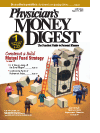Publication
Article
Physician's Money Digest
America's Doctors Must Climb the $ Mountain
Author(s):
Most people, if they saw a truck coming at them, would move. But when the truck comes in the form of life's basic financial obligations, it's hard to avoid it. Wise physicians know—you get locked into a standard of living.
THE PROBLEM
It's little wonder then that many of today's doctors have significant financial worries. Here's a sampling of life's daunting financial hurdles that regular, everyday doctors—that is, graduates, spouses, homeowners, consumers, parents, business owners, and taxpayers—must face:
(AAMC)
$104,000—Average debt of a medical school graduate.
(AMA)
$150,000—Average cost to start a medical practice.
(National Association of
Healthcare Consultants)
$289,000—Average annual primary care medical practice overhead costs.
(Bride's)
$23,000—Average cost of a wedding and honeymoon.
(Coldwell Banker)
$350,000—Average cost of a highend new house.
(US Labor Dept)
$25,100—Average annual spending (high-income families) on housing expenses.
(US Labor Dept)
$80,600—Average annual spending (high-income families) on household expenses.
(Consumer Reports)
$20,000—Average price of a new car.
(CreditWatch)
$8400—Average credit card debt for a US consumer.
(USDA)
$249,000—Average cost to raise a child from infant to age 18.
(IRS)
$62,000—Average annual taxes (federal, state, and local) for a high income household.
(College Board)
$120,000—Average 4-year cost to send a child to private college.
THE CHALLENGE
Further complicating matters is that most doctors are very busy, like to live well, face income contraction, and lack basic personal money management skills. Just consider:
(MGMA)
1.9%—Average annual salary increase for a primary care physician.
(National Association of
Healthcare Consultants)
53—Average workweek hours for a physician.
(Charles Schwab, Inc)
$2.8 million—Average savings a physician needs to reach a secure retirement.
(Prince & Associates)
84%—Percentage of physicians with no formal, detailed financial strategy.
(Physician's Money
Digest survey)
2%—Percentage of physicians who took business courses in medical school.
(Physician's Money
Digest survey)
97%—Percentage of physicians who are "worried"about their financial future.
Clearly, even hard-working doctors face huge potential money gaps. To help our readers properly scale the money mountain, we've instituted a regular section (page 23) on the fundamentals of debt and budget management.
